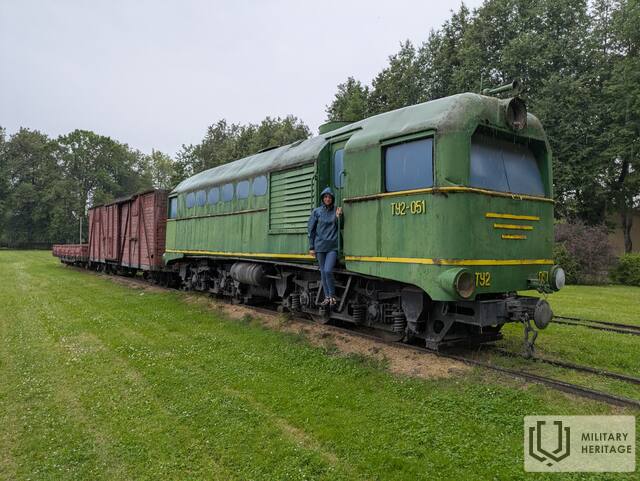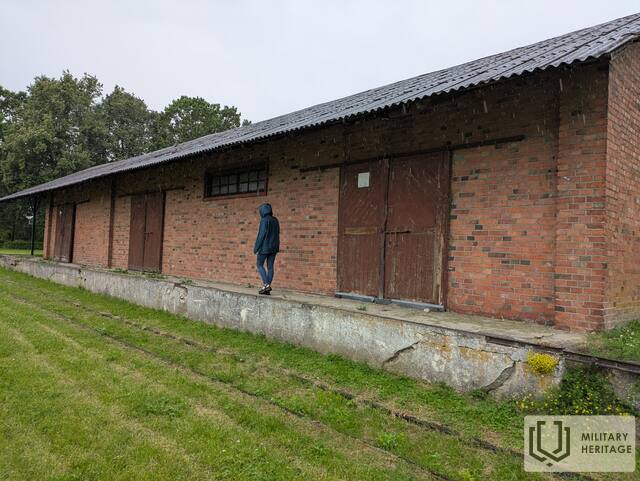Narrow gauge railway in Biržai Infrastructure

A 20th-century narrow-gauge railway complex with significant historical, architectural and scenic value.
"Siaurukas" is a 750 mm (2 ft 5 1/2 in) narrow gauge railway, the longest in Europe and one of the most unique heritage sites in Lithuania, therefore the surviving sections of the narrow gauge railway are protected as cultural property. Lithuania has 158.8 km (110 mi) of 750 mm (2 ft 5 1/2 in) narrow gauge railway lines, although only 68.4 km (serving five stations) are in regular use, with 12 locomotives operating. They are included in the Lithuanian Register of Immovable Cultural Heritage Sites.
The narrow-gauge railway line reached Biržai in 1921–1922, when the Biržai–Gubernija railway section was extended. This was the first narrow-gauge railway section built at the expense of the Lithuanian state itself.
In the year of independent Lithuania, 467 km of narrow-gauge railway was built. Forest materials for export, quartz sand, livestock, flax, beets, food supplies were transported along it. Adults went to work by train, and children - to school. On weekends, the train was full of berry and mushroom pickers, and in winter - skiers. Until the terminus of the Guberniya line in the city of Šiauliai, the train stopped at 16 railway stations.
In 1922, a passenger had to pay 7.20 Lithuanian auksinas (German Ostmarks) for one kilometer traveled in a 1st class carriage, and 1.80 Lithuanian auksinas for a 3rd class carriage.
During World War II, the narrow-gauge railway was militarized. It was also used to transport "enemies of the state" - people whom the Soviet authorities considered disloyal (even without any particular reason) - in simple cattle cars for forced deportation to Siberia. After the war, the prospects for the restoration and development of the narrow-gauge railway became very uncertain. The future of the Lithuanian railway was determined by the goals of the Soviet economy and politics.
From 1945 to 1980, more than 400 km of 20 narrow-gauge railway sections were closed. The longest remained the Biržai - Joniškeli and Joniškeli - Panevezys sections, which had a slightly higher freight turnover. 3 trains arrived at Biržai: 2 freight and 1 passenger train. With the expansion and development of road transport, the narrow-gauge railway became economically unstable. In 1988, passenger transport was discontinued. In 1996, during the Independent Republic of Lithuania, the narrow-gauge railway line to Biržai was completely closed.
Today, the narrow-gauge railway complex consists of the depot and station buildings, a water tower, and the old railway section. Later, as a testament to its glorious days, a recently repainted locomotive was brought for viewing.
Used sources and references:
Šaursliežu dzelzceļa komplekss, https://www.visitbirzai.lt/narrow-railway-complex/
Narrow-gauge railways in Lithuania, https://en.wikipedia.org/wiki/Narrow-gauge_railways_in_Lithuania
Related topics
Related stories
600mm narrow gauge railways in Sēlia
It is often said that war is the father of all things, and that has literally been the case with the Latvian rural railways. Any army, whether attacking or defending, requires considerable resources to ensure warfare. When the German army entered the territory of Latvia in 1915, it faced supply challenges. By the end of 1915, the front had stabilized along the Daugava line. Historically, the population density in the territory of Sēlija was low, and therefore there was no extensive network of transport routes.













